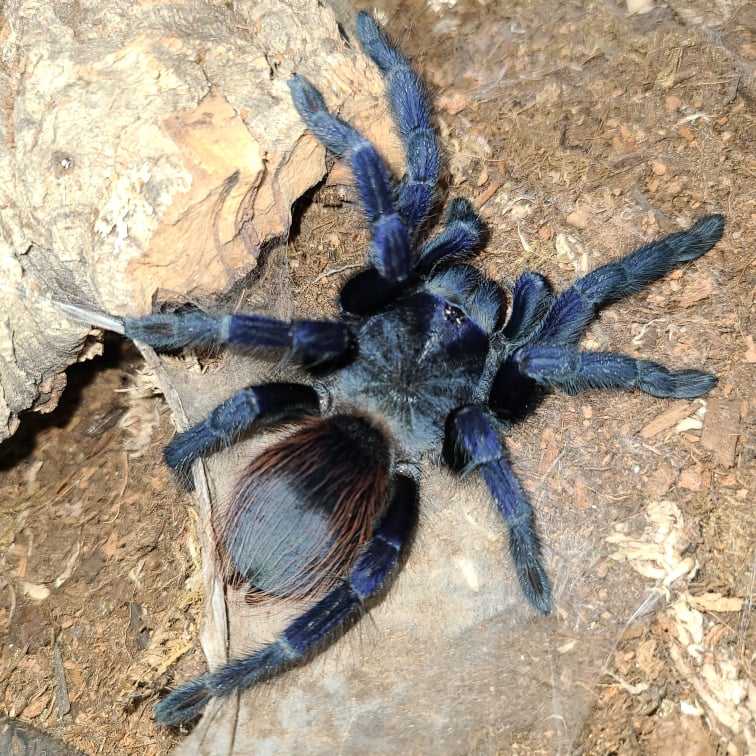Tarantuladen.co.za
Brazilian Blue(Lasiocyano Sazimai)
Brazilian Blue(Lasiocyano Sazimai)
Out of stock
Couldn't load pickup availability
The Brazilian Blue (Lasiocyano sazimai) — a true gem of a tarantula, and one of the most eye-catching species in the hobby. This New World beauty is all about that metallic sapphire shimmer, a mix of elegance and mystery that makes her a centerpiece in any serious collection.
Quick Facts
Common Name: Brazilian Blue
Scientific Name: Lasiocyano sazimai (formerly Pterinopelma sazimai)
Origin: Chapada Diamantina, Bahia state, Brazil
Size: 5–6 inches (12–15 cm) leg span
Lifespan:
- Females: 12–15 years
- Males: 3–4 years
Temperament: Nervous and skittish — not aggressive, but quick to retreat
Coloration:
- Deep blue metallic legs and carapace
- Black abdomen with reddish hairs
- Under the right light? Absolutely iridescent — unreal beauty
Housing
Enclosure Type: Terrestrial
Substrate: 4–5 inches of slightly moist coco fiber/topsoil mix
Humidity: 65–75% (allow one side of the enclosure to stay a bit drier)
Temperature: 72–78°F (22–25°C)
Decor:
- Cork bark hide or half-log
- Water dish (clean, always full)
- Some leaf litter or moss for natural feel
Burrowing behavior: They might dig a shallow tunnel but aren’t heavy fossorial
These spiders appreciate a secure hide — it’ll bring them out more often when they feel safe.
Feeding
Diet: Crickets, roaches, mealworms, superworms
Feeding Frequency:
- Slings: 2–3x/week
- Juveniles: Weekly
- Adults: Every 10–14 days
Feeding response: Moderate — not overly aggressive, but they'll come out and take prey with confidence
Why They’re a Crown Jewel
Absolutely breathtaking coloration — one of the few species that is truly blue
Docile and calm, especially for intermediate keepers
Makes an amazing display spider, especially in natural light
Rare and endemic to a specific mountainous region in Brazil — adds exotic appeal
Not super common in the hobby, but still manageable for a non-beginner
Things to Know
Not the fastest grower — moderate growth rate, patience pays off
Can be shy — may spend time in or near their hide
Like many New World species, they can flick urticating hairs if stressed
Sensitive to poor humidity or airflow — balance is key to avoid mold or dehydration issues
Share


